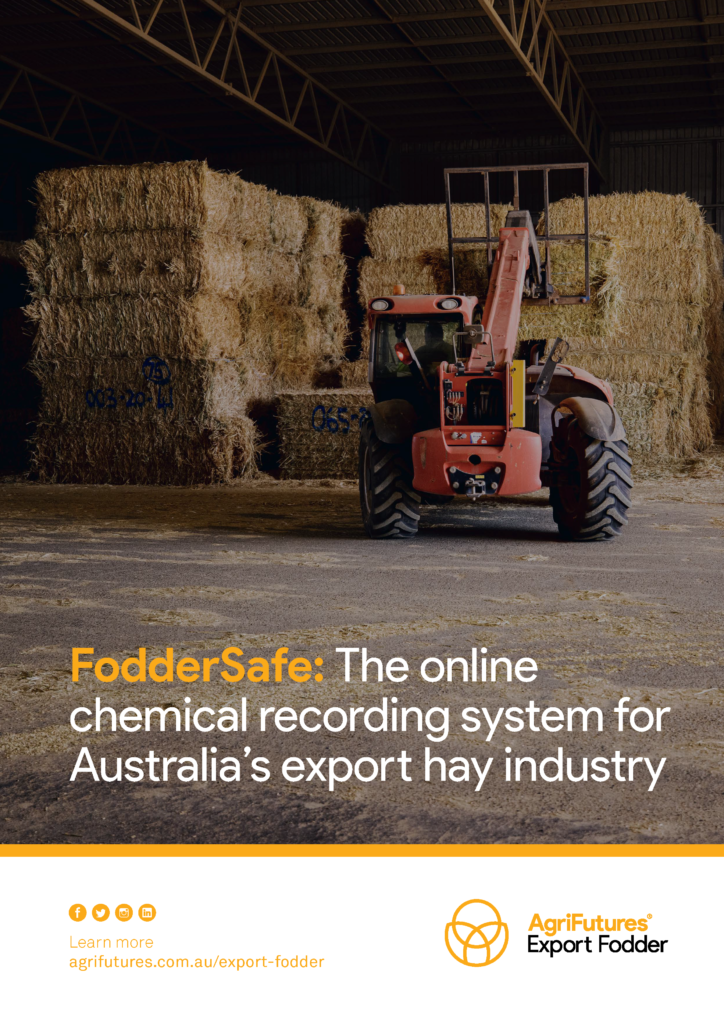Agribusinesses involved in the processing of on-farm produce need to ensure that the produce meets industry quality assurance expectations. In the fodder industry, this requires chemical applications to be recorded and checked for compliance against chemical label restrictions to ensure that the fodder passes later quality assurance tests.
The aim of the FodderSafe spray diary system is to provide a simple online interface that enables export fodder companies to validate the use of products and chemicals in association with target pests and diseases according to product labels and industry guidelines by the growers who supply them. This includes: Application rates (usually maximum only); Application units (can be multiple types; can manage unit multipliers, e.g. kilograms or grams); Matching products with targets (one to one, one to many, many to one); Crop growth stage (before, after or at); Allowed/not allowed for the industry; Allowed/not allowed by state; Processor restrictions or modifications for any of the above.
If any of the above fall outside label or industry guidelines, an alert is displayed for each instance of non-compliance. Farmers may supply multiple processors via individually contracted paddocks, so some alerts are generated per paddock.
FodderSafe also calculates the earliest harvest date for each paddock based on cumulative chemical withholding periods. This avoids the issue of harvesting too early and creating maximum residue level (MRL) issues in later tests in international destination markets.
FodderSafe reduces the risk of quality assurance issues and potential loss of export markets, and improves industry practices that demonstrate a professional approach to managing product quality and safety.
The FodderSafe team has made some additional recommendations that will potentially reduce the administrative time taken by export staff to input data into the FodderSafe spray diary and further lower the risk of MRL non-compliance in all export markets.





